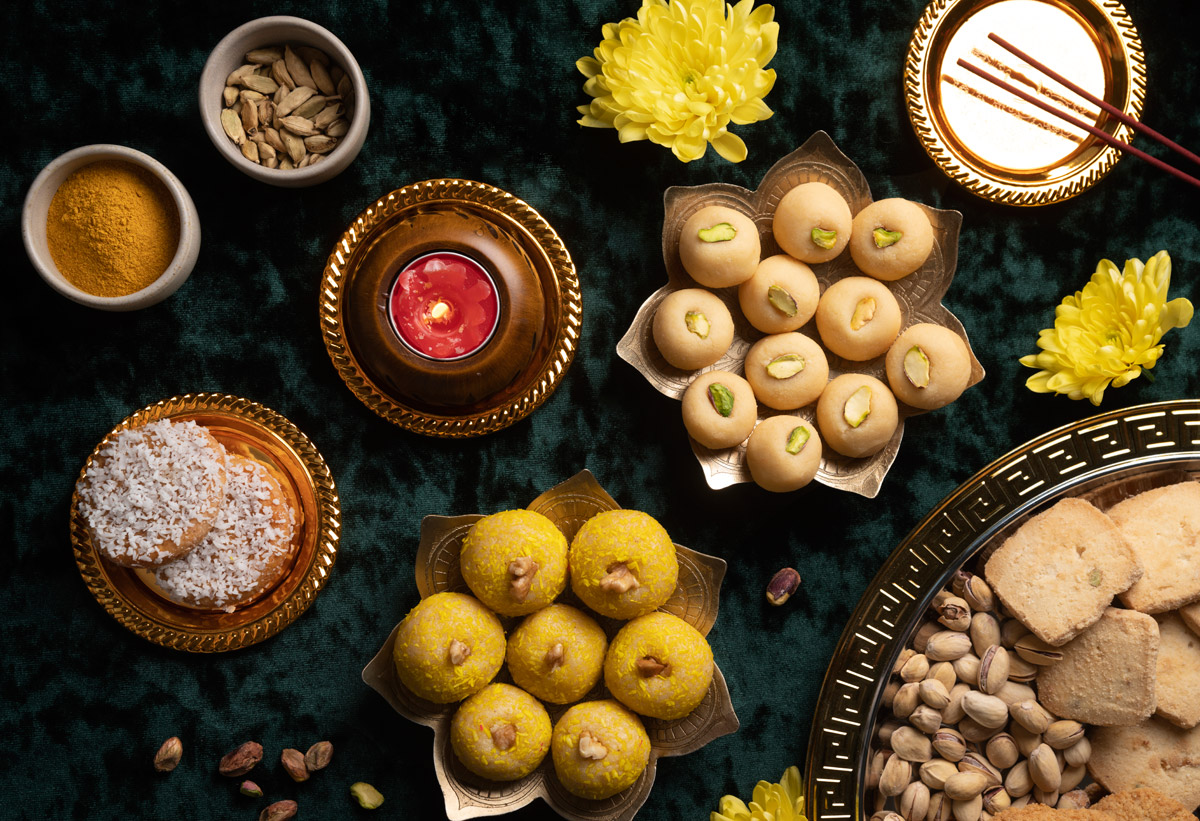Janmashtami special: Making a traditional chappan bhog thali at home
Here’s your guide to making a simple but heartfelt Janmashtami chappan bhog with a handy checklist, plus three easy recipes; Panchaamrit, Makhan Mishri and Simple Rice Kheer
Krishna Janmashtami, also known as Gokulashtami, celebrates the birth of Lord Krishna. At the heart of this celebration is the bhog, a special feast of pure, sattvic foods prepared specially for the occasion. This offering, first presented to Bal Gopal and then shared as prasadam, a beautiful way to celebrate Krishna Leela and connect with family and community.
A guide to creating a Janmashtami bhog thali
Preparing a special bhog thali doesn't have to be complicated. The key is to offer items that are simple and represent Krishna’s favourite foods.
- Panchaamrit: A sacred mix of five ingredients (milk, curd, ghee, honey, and sugar) used for both ritual purification (abhishek) and as a sweet offering.
- Makhan Mishri: Homemade butter mixed with rock sugar (mishri), a simple and symbolic offering.
- Kheer: A creamy rice pudding flavored with cardamom, saffron and dry fruits. A classic and beloved sweet. For those observing fast, Sabudana Kheer made from tapioca pearls is an excellent choice.
- Mathura-style Pedas: Rich, traditional sweets made from khoya (reduced milk solids), symbolic of Krishna's birthplace.
- Coconut Ladoo: Quick, easy, and kid-friendly, these sweet balls are a great addition to any thali.
- Savoury Vrat Items: Foods suitable for fasting, such as Sabudana Khichdi, Samak rice pulao, or simple Aloo Jeera.
An ideal bhog thali could include a small bowl of Panchaamrit, a scoop of Makhan Mishri, a serving of Kheer, a sweet like a ladoo or peda, and a savoury vrat-friendly dish. Don't forget to include fresh fruits and a few Tulsi leaves, which are considered sacred.
Quick and simple recipes for your bhog thali
These three essential recipes are perfect for anyone looking to prepare a bhog with ease.
Panchaamrit
Ingredients:
- 1 cup warm whole milk
- 1/4 cup fresh curd (yoghurt)
- 1 tbsp ghee
- 1 tbsp honey
- 1 tbsp sugar or jaggery powder
- A few tulsi leaves (optional)
Instructions:
- In a clean bowl, gently whisk the warm milk and fresh curd together until smooth.
- Stir in the ghee, honey, and sugar, mixing until everything is fully dissolved.
- Add the tulsi leaves for their sacred fragrance and mix gently. This offering is best served fresh.
Makhan Mishri
Ingredients:
- 1/2 cup soft, fresh homemade butter
- Mishri (rock sugar), crushed or powdered to taste
Instructions:
- Lightly whip the softened butter until it is smooth and creamy.
- Place a small mound of the butter on a leaf or a small, clean plate.
- Sprinkle with crushed mishri. The contrast between smooth, fresh butter and the crunchy rock sugar is delightful.
Simple Rice Kheer
A classic Indian dessert that is creamy, fragrant and a perfect festival sweet.
Ingredients:
- 1/4 cup Basmati rice, rinsed
- 1 litre full-fat milk
- 1/4 cup sugar or jaggery powder (adjust to your preference)
- A pinch of saffron threads, soaked in a tablespoon of warm milk
- 1/2 tsp cardamom powder
- 2 tbsp chopped mixed nuts (almonds, cashews)
Instructions:
- In a heavy-bottomed pan, bring the milk to boil.
- Add the rinsed rice and reduce the heat to a simmer. Cook for 20-30 minutes, stirring occasionally to prevent the rice from sticking, until the rice is soft and the kheer has thickened.
- Stir in the sugar, saffron milk, and cardamom powder. Cook for another 3-4 minutes until the sugar dissolves completely.
- Remove from heat and stir in the chopped nuts. The kheer will thicken as it cools.
What are some of your favourite sweets to offer for Janmashtami? Let us know in the comments!

